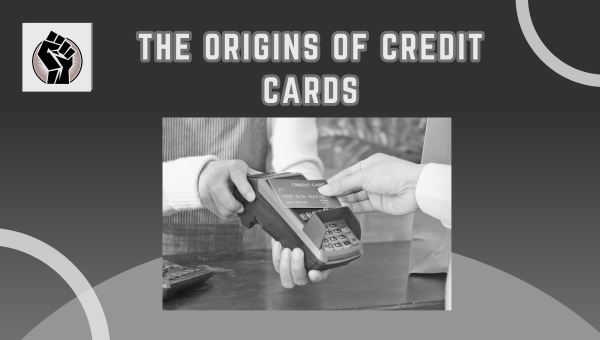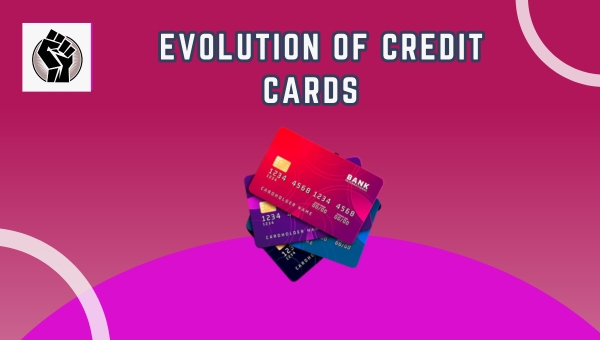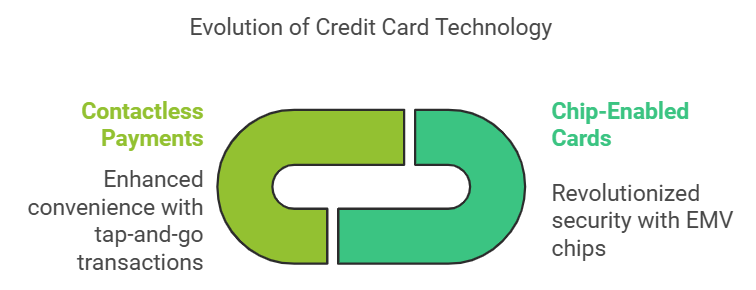Imagine a world without credit cards—where purchases relied solely on cash or barter. Hard to picture, right? Credit cards have transformed how we access financial services, making transactions quicker and more convenient. But how did this revolutionary tool come to be? From humble beginnings to a cornerstone of modern finance, the history of credit cards is a fascinating journey.
In this article, we explore how they started, how technology shaped them, and how they continue to evolve. Whether you’re curious about their origins or eager to understand their future, let’s dive into the remarkable history of credit cards.
The Origins Of Credit Cards
The history of credit cards is a journey through time, revealing how financial systems evolved to cater to modern needs. From early credit practices to the emergence of charge cards, each phase marked a step closer to the credit tools we use today. Let’s explore the foundation of this transformation.

Early Concepts Of Credit
The idea of credit has existed for centuries, predating any form of modern banking. In ancient civilizations, people relied on a barter system or verbal agreements to borrow goods or money with the promise of future repayment.
For example:
- Mesopotamian societies documented transactions on clay tablets, creating some of the earliest records of credit.
- During the Middle Ages, merchants offered credit to trusted customers, enabling them to purchase goods without immediate payment.
- The use of ledgers and promissory notes in later centuries laid the groundwork for formalized credit systems.
These practices demonstrated the value of trust and record-keeping in financial exchanges, eventually inspiring the structured systems we see today.
The Birth Of Charge Cards
The evolution towards modern credit cards began with the advent of charge cards in the early 20th century. Unlike the informal credit systems of the past, charge cards introduced a standardized and accessible way to delay payments.
Key developments include:
- In 1914, select U.S. merchants issued metal plates or “charge plates” to loyal customers, enabling them to purchase goods on credit.
- The 1940s saw the emergence of charge cards like the Diners Club card, which was introduced in 1950 as the first widely recognized charge card. It allowed users to pay for meals at multiple establishments using a single card.
Charge cards were pivotal in shaping the idea of a universal payment system, providing a foundation for today’s versatile credit card networks.
Evolution Of Credit Cards
The journey of credit cards has been marked by continuous innovation and adaptation. From their humble beginnings to the technologically advanced tools they are today, credit cards have consistently evolved to meet changing consumer needs. Let’s explore two key breakthroughs that shaped modern credit cards as we know them.

Introduction Of Plastic Cards
Plastic cards became the defining feature of modern credit systems, transforming how people managed their finances. Before their arrival, paper-based systems were common, but they lacked durability and convenience. The introduction of plastic in the mid-20th century provided a lightweight, long-lasting, and easily portable option, making credit cards more accessible for everyday use.
This innovation not only simplified transactions but also created a sense of uniformity in how payments were made. Consumers could now carry a single card that replaced cumbersome cash or checks. These cards quickly became essential tools for financial independence, propelling credit into mainstream culture.
The Magnetic Stripe Revolution
The addition of the magnetic stripe in the 1970s marked a significant leap forward in credit card functionality. This small stripe of encoded data made transactions faster and more secure. It enabled cards to store essential account information, allowing for automated processing at point-of-sale terminals.
This breakthrough also laid the groundwork for electronic authorizations and real-time payments. Businesses could now verify transactions instantly, reducing the risks of fraud and errors that manual systems often encounter. The magnetic stripe became a global standard, cementing credit cards as a reliable and efficient payment method.
Through these developments, credit cards transitioned from simple tools into indispensable components of modern personal finance, offering both convenience and security to users worldwide.
Also Read: CEO of Home Depot: Leadership That Transformed Retail
The Role Of Technology In Credit Cards History
Technology has played a transformative role in shaping credit cards into the sophisticated tools they are today. From improving security to enhancing convenience, these advancements have redefined how users interact with their finances.

Let’s explore two pivotal developments in this journey.
Development Of Chip-Enabled Cards
Chip-enabled credit cards have revolutionized the security landscape. These cards, equipped with EMV (Europay, Mastercard, Visa) chips, replaced older magnetic stripes to offer superior protection against fraud.
Here’s how they made a difference:
- Enhanced Security: Unlike magnetic stripes, chips generate a unique code for every transaction, making it nearly impossible for fraudsters to duplicate card details.
- Global Standardization: The widespread adoption of chip technology ensured seamless transactions across various countries, boosting international usability.
- Improved Durability: Chips are more resistant to wear and tear compared to magnetic strips, offering longevity to consumers.
This shift not only reduced fraudulent activities but also built trust among users, ensuring a safer transactional experience.
Rise Of Contactless Payments
Contactless payments represent a leap forward in convenience and speed. Using technologies like NFC (Near Field Communication) or RFID (Radio Frequency Identification), these cards allow for swift, tap-and-go transactions.
Let’s break it down:
- Speed And Convenience: No need to swipe or insert; a simple tap completes the transaction in seconds, saving valuable time.
- Hygienic Alternative: Particularly during health crises, contactless payments gained popularity as a touch-free and safer option.
- Increased Adoption: With more retailers supporting this technology, users now enjoy a seamless shopping experience virtually everywhere.
These innovations have not only modernized credit card usage but also set the stage for future advancements in digital payment systems.
Major Milestones In Credit Cards History
Credit cards have undergone numerous transformations, each bringing significant changes to how we manage and use money. Among these developments, certain milestones stand out for their global impact and influence on modern financial systems. Let’s explore two key moments that shaped the journey of credit cards.
First International Credit Card
The introduction of the first international credit card marked a pivotal point in financial history. In the 1950s, Diners Club recognized as the first widely used charge card, laid the foundation for international credit card systems. However, it was the launch of BankAmericard (later known as Visa) in 1958 that truly expanded the concept across borders.
- This innovation allowed users to make purchases globally, eliminating the need for carrying large sums of cash when traveling.
- The system fostered a seamless connection between merchants and consumers, regardless of geographic location.
- It set the stage for a unified financial network, enhancing convenience and promoting economic activity on a worldwide scale.
The first international credit card not only simplified transactions but also built trust in electronic payment systems, which paved the way for more sophisticated global financial tools.
The Launch Of Online Payments
The advent of online payments revolutionized consumer habits, bridging the gap between technology and everyday financial transactions. This milestone began gaining traction in the mid-1990s, fueled by the rise of the Internet and e-commerce platforms.
- Online payment systems allowed users to shop from the comfort of their homes, introducing a new level of convenience.
- The integration of credit cards into digital platforms ensured secure and efficient payment processes, making online shopping a practical choice for millions.
- It also encouraged businesses to expand their presence online, fostering a more interconnected economy.
This development redefined how people interacted with money, bringing unparalleled accessibility and reshaping consumption patterns. Today, online payments remain a cornerstone of modern commerce, a testament to the enduring evolution of credit cards.
Also Read: Wells Fargo Bank CEO: Disclose The Leadership Secrets
Current Trends In Credit Card Technology
The world of credit cards is continuously evolving, driven by advancements in technology. Today, consumers seek convenience, enhanced security, and seamless transactions. Let’s explore two major innovations shaping the credit card landscape today.
Virtual Credit Cards
Virtual credit cards are becoming a preferred choice for secure online transactions. These are not physical cards but digital versions, designed specifically to enhance user safety during online purchases.
Here’s how they work and why they matter:
- Temporary Card Numbers: Virtual credit cards provide a one-time-use or temporary card number, ensuring your actual credit card details remain hidden.
- Enhanced Security: They reduce the risk of fraud by limiting exposure of personal information.
- Flexibility: Users can set spending limits or expiration dates on their virtual cards, giving them greater control over online purchases.
- Widely Accepted: Despite being virtual, these cards are compatible with most e-commerce platforms, making them highly practical.
By offering an added layer of protection, virtual credit cards are helping users shop online with confidence.
AI And Fraud Prevention
Artificial intelligence is playing a critical role in combating credit card fraud. By analyzing patterns and predicting anomalies, AI ensures that transactions remain secure.
Here’s how it contributes to fraud prevention:
- Real-Time Monitoring: AI systems monitor credit card transactions in real time, flagging any unusual activity instantly.
- Pattern Recognition: These systems study spending behaviors to detect deviations that might indicate fraudulent activity.
- Proactive Alerts: AI can notify users and banks about suspicious transactions, preventing unauthorized charges.
- Continuous Learning: Machine learning enables AI to adapt and improve its fraud detection capabilities over time.
As credit card fraud becomes more sophisticated, AI stands as a robust line of defense, ensuring safer transactions for users globally.
FAQs
When were plastic credit cards introduced?
Plastic credit cards were introduced in the 1950s, making them more durable and accessible compared to earlier forms like paper or cardboard cards.
What was the purpose of the magnetic stripe on credit cards?
The magnetic stripe, introduced in the 1960s, enhanced credit card security and streamlined transactions by storing essential data electronically.
How did chip technology improve credit cards?
Chip-enabled credit cards, launched in the 1990s, improved security by encrypting data, and reducing fraud risks during transactions.
What are virtual credit cards?
Virtual credit cards are digital versions of physical cards, offering a secure way to conduct online transactions without exposing actual card details.
Conclusion
The journey of credit cards from simple credit systems to advanced technological marvels reflects the evolution of modern finance. From the early concepts of extending credit to the rise of virtual and contactless payments, credit cards have consistently adapted to meet the needs of consumers.
Their history is a testament to innovation, aiming to provide both convenience and security in financial transactions. Understanding this progression offers valuable insights into the world of personal finance and its future potential.
If you found this exploration insightful, dive deeper into more informative topics on our site. Let’s continue uncovering the incredible stories behind everyday innovations!





